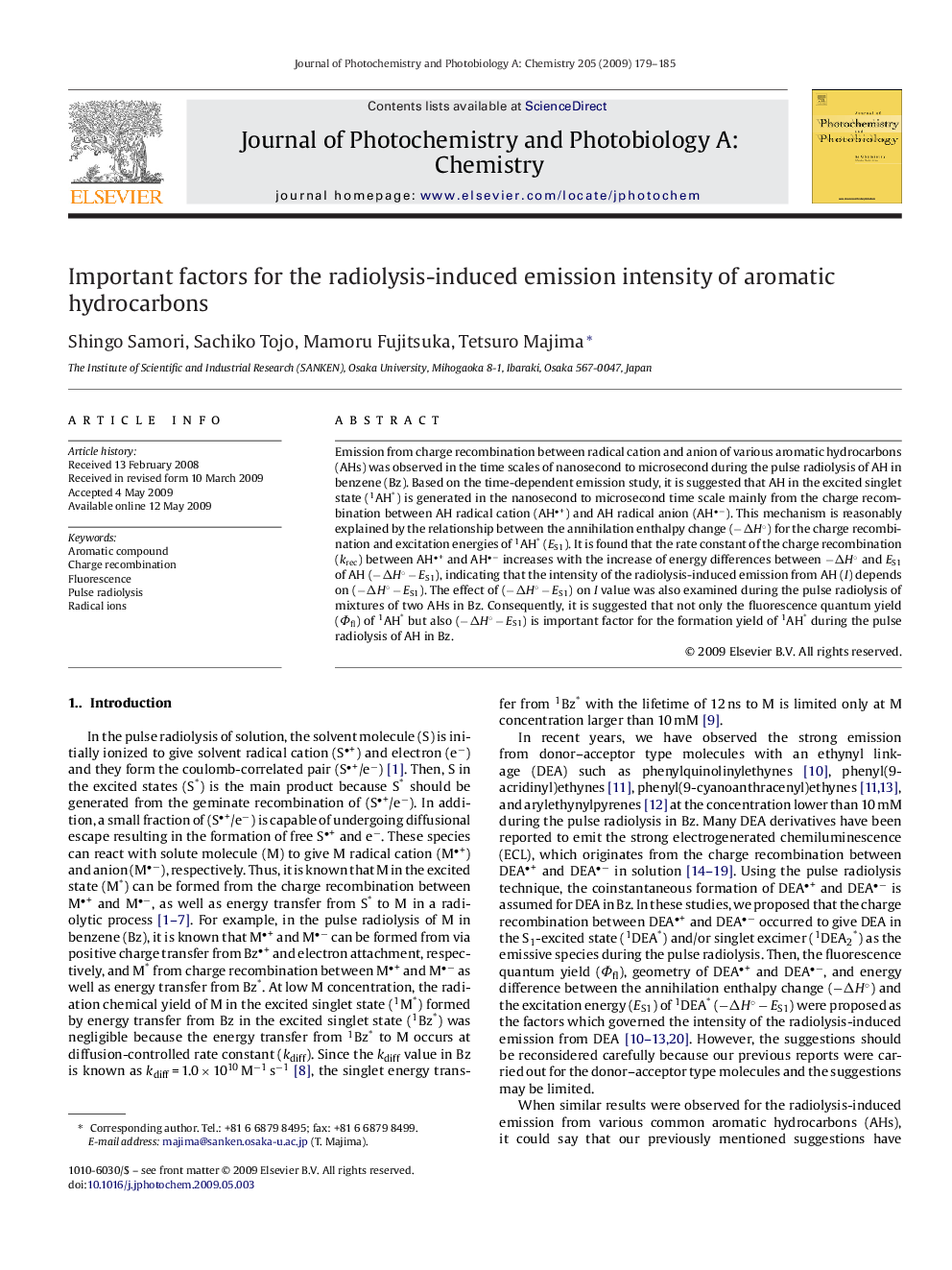| کد مقاله | کد نشریه | سال انتشار | مقاله انگلیسی | نسخه تمام متن |
|---|---|---|---|---|
| 27912 | 44049 | 2009 | 7 صفحه PDF | دانلود رایگان |

Emission from charge recombination between radical cation and anion of various aromatic hydrocarbons (AHs) was observed in the time scales of nanosecond to microsecond during the pulse radiolysis of AH in benzene (Bz). Based on the time-dependent emission study, it is suggested that AH in the excited singlet state (1AH*) is generated in the nanosecond to microsecond time scale mainly from the charge recombination between AH radical cation (AH+) and AH radical anion (AH−). This mechanism is reasonably explained by the relationship between the annihilation enthalpy change (−ΔH°) for the charge recombination and excitation energies of 1AH* (ES1). It is found that the rate constant of the charge recombination (krec) between AH+ and AH− increases with the increase of energy differences between −ΔH° and ES1 of AH (−ΔH° − ES1), indicating that the intensity of the radiolysis-induced emission from AH (I) depends on (−ΔH° − ES1). The effect of (−ΔH° − ES1) on I value was also examined during the pulse radiolysis of mixtures of two AHs in Bz. Consequently, it is suggested that not only the fluorescence quantum yield (Φfl) of 1AH* but also (−ΔH° − ES1) is important factor for the formation yield of 1AH* during the pulse radiolysis of AH in Bz.
Journal: Journal of Photochemistry and Photobiology A: Chemistry - Volume 205, Issues 2–3, 25 June 2009, Pages 179–185